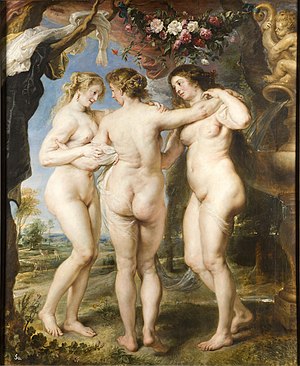- MARIA TERESA OF SABOYA.
Historical and artistic context
-Time: In 1710.18th century.
 -Style: Baroque.
-Style: Baroque.-Artist: Antoine Coysevox.
-Material and technique: Made of white marble.Architecture.
-Location: Louvre Museum.
Iconographic analysis
-Name: Sculpture of ''María Teresa de Saboya''.Duchess of Borgoña.
-Type of building: Sculpture with the mythological representation of the goddess Diana.It's located in the Louvre Museum but the sculpture come from the Palace of Versailles.
Formal analysis
This is an usual sculpture of the Baroque art, made up of marble, represented María Teresa de Saboya as the goddess Diana.You know that Diana in the Roman mythology, is the goddess of the hunt, so that's why she is taking a dog.
-Size of the sculpture:
The sculpture measure about 240 cm.
-Meaning:
The sculpture was created in 1710, a year before the death of María Teresa. In this sculpture the artist wants show the Duchess of Borgoña such as a protective of the nature and with a wild bearing.
- THE THREE GRACES
Historical and artistic context
-Time: 1636-1639.
-Style: 17th century, Baroque.
-Artist: Peter Paul Rubens.
-Material and technique: Oil on boards.
-Location: Prado Museum.
Iconographic analysis
-Name:The three Graces.
-Type of paint: This paint was done by oil and it's belong to the Baroque art.
Formal analysis
-Composition, space and decoration:
The composition respects the classical model that represent the Graces totally nude, with a extreme white skin, and assembled, the veil that cover the Graces and the watchs produce more unit.They form a circle.The paint is colourful , warm, and with a beautiful lanscape, there are a tree, flowers and a fountain.
-Size of the paint:
221cm x 181cm
-Meaning:
The three women are characterized for the bombast of their bodies, people say that one of the woman is the wife of Rubens.The paint was donated to Felipe IV of Spain for decorate the rooms of his mansion and them for decorate the rooms of the Alcazar of Seville.


No comments:
Post a Comment
Note: Only a member of this blog may post a comment.